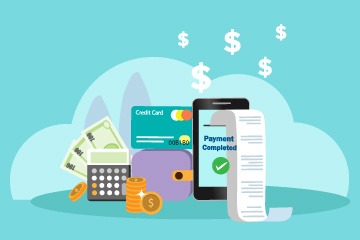From grocery shopping to taxi hailing to entertainment, the modern customer is used to a customized, easy, and intuitive digital experience that was unheard of even ten years ago. More importantly, modern customers are demanding the same experience from other services including banking. For years, the banking sector resisted change because of concerns around security and compliance, and because they enjoyed a high degree of customer trust and loyalty. The emergence of fintechs and technology majors in the banking sector has changed the name of the game. With their agile platforms, multitude of products and services, and hyper personalized strategies, these new age entities are pulling customers away from traditional banks. As a result, banks are now faced with eroding customer loyalty and diminishing revenues. Today, it is clear that digital transformation is no longer an option but a crucial business necessity for the banking sector. And most banks have invested in modernizing their technology approaches and exploring new operating models. Banking-as-a Platform (BaaP) is gaining popularity, with banks looking to either build their own platforms or use third party solutions to modernize and transform their legacy core to an agile scalable platform.
What is Banking-as-a-Platform?
Banking as a platform is a new business model where a bank owns and operates a digital marketplace to offer a range of services – both banking and non-banking.1 The idea is to orchestrate a complete ecosystem that offers customers a comprehensive portfolio of services to meet every need. By moving to a platform-based model, banks can open up the scope of their business and compete with fintechs on their terms.
The Advantages of BaaP Models
The World Bank Retail Banking Report 2020 estimates that BaaP models have the potential to clock twice as much operating profits as traditional banking models. Banks can secure higher market value and steadier growth as well. By reducing operating costs, opening up new sources of revenues via third party offerings and helping the bank to offer Banking-as-a-Service (BaaS), this model can help increase profits. And as banks move to ecosystem orchestrater roles, they will find themselves in a much stronger position to stave off competition from fintechs. They will also be able to reduce the cost of competing for the customer’s wallet share by working with different players across industries. This will help them to rethink their resource allocation and focus more on business areas that offer higher ROI.
With BaaP models banks can improve their agility and flexibility to respond quickly to customer requirements in an evolving market landscape. As they delight customers with seamless quick personalized services, they will enjoy better loyalty and even gain new customers to grab bigger market shares. For example, challenger banks like Revolut (United Kingdom) and N26 (Germany) are working with leading financial services providers in several product categories. Some others like Starling Bank (United Kingdom) and Fidor Bank (Germany) have partnered with third party providers in some categories. And Chinese tech giants like AliPay and WeChat offer customers access to thousands of products from multiple financial services providers on their ecosystem. The platform- based models have helped these banks generate revenues while working with minimum owned assets and modular inexpensive architecture.
BaaP is also the foundation for newer models like Banking-as-a-Service that can help banks explore the possibilities of newer revenue generating options as such pay as you go schemes. Berlin based Solaris Bank, a technology company with a banking license offers a wholly digital BaaS platform with modular solutions that seamlessly integrate services transactions, and KYC through APIs. There is increasing adoption of BaaS models that are proving to be reliable and profitable. Bankable and Pi1 in UK, are examples of BaaS models as is the branchless bank working with Walmart to help bring the unbanked within the banking umbrella. The US based BBVA offers a holistic suite of BaaS services and products to give third parties the scalable infrastructure support they need to implement out of the box ideas.
The digital core of BaaP will enable banks to better leverage technologies like big data analytics, AI, and ML. This is crucial as customer data holds the key to all personalization strategies. Data driven insights will help banks differentiate their services from that of competition and drive customer loyalty and retention. With BaaP models banks can easily scale up to be ecosystem orchestrators who provide an end-to-end experience for customers. This will ensure a significant increase in transaction volumes, and improved ROIs. Large institutional banks can explore new revenue streams like online lending and deposits.
How Banks Can Effectively Shift to BaaP Models
Of course, the move to BaaP models is not without its challenges. The platform must be scalable, secure, and compliant, and at the same time it needs to be open enough to allow third party developers to build products around it. In short, a banking platform will establish standards for third party developers to build products and services while letting the bank deliver a unified banking experience. To achieve this, banks must consider modernizing legacy cores. They must also focus on shifting from a vertically integrated product-based model to a more open and diversified ecosystem model. Partnering with fintechs to leverage their technology expertise may be a good idea as they can eliminate the huge technological investment needed to build a new platform and easily leverage customer data. There is also the organizational and culture change to consider in making the shift to BaaP models. Such a transformation will require an integrated effort across crucial elements ranging from strategy and governance to customer experience management and talent management. Data privacy regulations both existing and potential will also need to be considered as they can prevent a platform-based business from realizing its full potential.
The shift to platform-based models is crucial for any bank that wants to increase its market share and share of customer wallet. These platforms can give them the edge they need to compete with fintechs and tech giants. Their position at the center of every transaction and the customer trust they still enjoy are two significant advantages that banks must leverage as they move forward as ecosystem orchestrators on a BaaP model.


